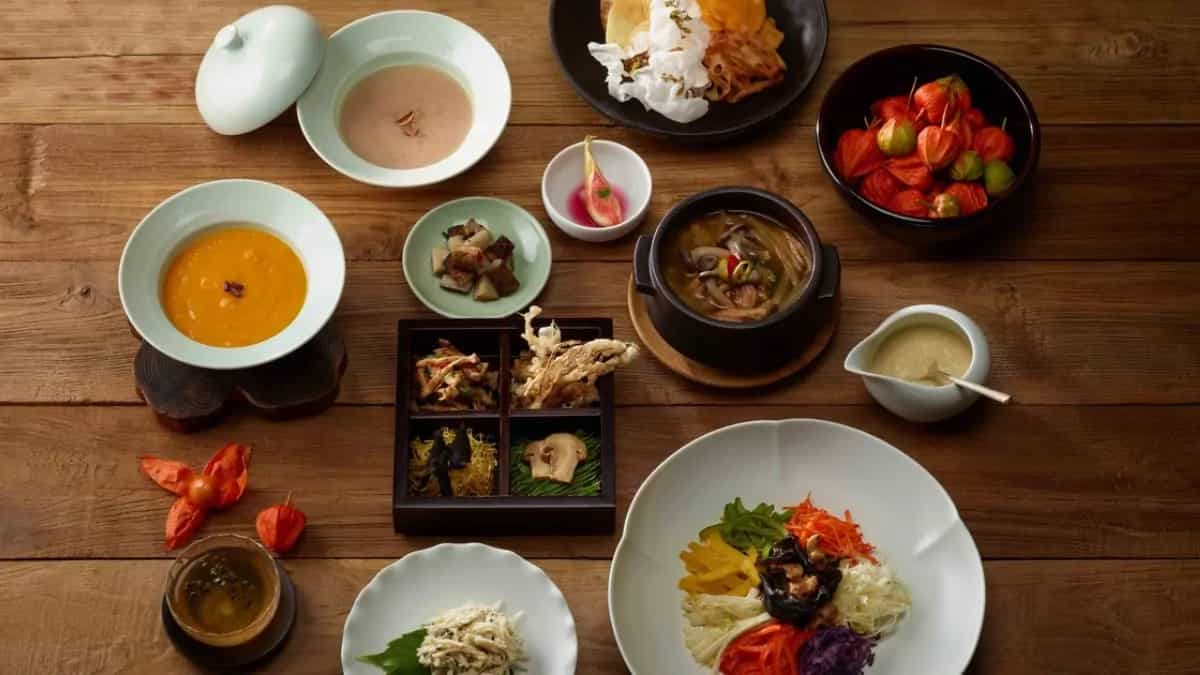
Temple Food From 5 Asian Countries; India, Thailand & More
By Slurrp Desk
Updated:Aug 06, 2023
Embark on a transformative culinary journey as we explore the sacred connection between Temple Food from five countries and spiritual meditation. Discover how mindfulness, gratitude, and seasonal ingredients blend to nourish body and soul. Savour each bite, finding inner peace and heightened awareness in the simplicity of temple cuisine.
Image Credit: Google Pics
Temple food is a unique culinary tradition that originated within the walls of ancient monasteries and temples across the globe. The preparation and consumption of temple food are not merely for sustenance but are also considered a form of spiritual practice. This sacred cuisine is deeply rooted in the principles of mindfulness, simplicity, and gratitude.
The Connection between Food and Spirituality
The Influence of Buddhism on Temple Food
Buddhism, one of the world’s major religions, has played a significant role in shaping the philosophy behind temple food. In countries like South Korea, Japan, Thailand, and Vietnam, Buddhism has been a driving force in developing unique temple cuisine.
1. South Korea: The Simplicity of Temple Food
In South Korea, Buddhist temple food is known as “Sunsik” or “Sangeumsik.” The preparation of this cuisine adheres to strict principles of simplicity and balance. Natural ingredients, such as grains, vegetables, and wild herbs, are meticulously combined to create dishes that are both delicious and nutritious.
The act of preparing and consuming temple food in South Korea is considered a form of meditation in itself. Monks and visitors alike engage in mindful eating practices, appreciating each bite as a moment of gratitude and reflection.
2. Japan: Shojin Ryori – Cuisine for the Mind
Japan’s Buddhist monastic cuisine, known as “Shojin Ryori,” embodies the principles of mindfulness and compassion. The dishes are entirely plant-based, with a focus on seasonal ingredients. This not only promotes sustainability but also encourages a deeper connection with nature.
Shojin Ryori is more than just a meal; it is an integral part of the Zen Buddhist practice. The meticulous preparation and presentation of the food mirror the attention to detail required in meditation.
3. Thailand: Temple Food as a Path to Purity
Thai temple food, often referred to as “Aharn Chao Wat,” is prepared with the intention of promoting purity of body and mind. The cuisine primarily consists of vegetarian dishes, meticulously crafted to avoid any harm to living beings.
The flavours of Thai temple food are a delicate balance of sweet, sour, salty, and spicy, reflecting the harmony sought in both culinary and spiritual practices.
4. Vietnam: Simple and Wholesome Temple Cuisine
Vietnamese temple cuisine, also known as “Monastery Food,” emphasizes simplicity and wholesomeness. With a focus on fresh vegetables, herbs, and grains, the dishes reflect the balance between mind, body, and spirit.
The preparation of Vietnamese temple food is a meditative process, with the cooks infusing each dish with positive intentions and prayers for well-being.
5. India: Prasad – Divine Temple Offering
In India, temple food is often referred to as “Prasad,” which translates to “divine offering.” It is considered a blessing from the deities and is distributed to devotees as a token of love and grace.
The preparation of Prasad involves the utmost purity and devotion. It is believed that consuming this blessed food can lead to spiritual upliftment and a deeper connection with the divine.
The Role of Temple Food in Meditation
The peaceful ambience of temples and monasteries, along with the intentional preparation of the food, creates an environment conducive to mindfulness. It encourages individuals to be present at the moment, fostering a deeper understanding of themselves and the world around them.
The Benefits of Temple Food on Spiritual Practice
Incorporating temple food into one’s spiritual practice can yield numerous benefits. Some of these include:
Eating temple food mindfully enhances the sensory experience of taste and texture, making individuals more attuned to the subtleties of flavours and aromas.
The act of mindful eating can lead to a better understanding of emotional eating patterns, helping individuals develop a healthier relationship with food.
3. Gratitude and Humility
Temple food encourages individuals to be grateful for the sustenance they receive, promoting a sense of humility and appreciation.
The practice of consuming temple food in serene surroundings helps individuals achieve a state of inner peace and tranquillity.
5. Connection with Nature
Many temple cuisines emphasize seasonal and locally sourced ingredients, fostering a deeper connection with the natural world.
Remember, whether you are in South Korea relishing Sunsik, in Japan savouring Shojin Ryori, in Thailand enjoying Aharn Chao Wat, in Vietnam indulging in Monastery Food, or in India partaking in Prasad, each bite can be a moment of enlightenment and spiritual growth.







